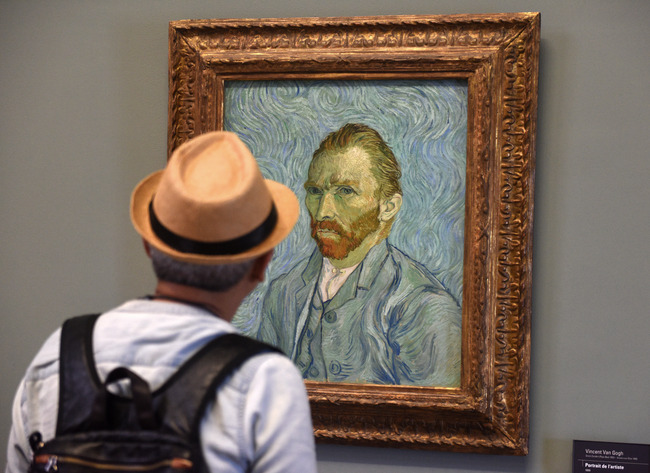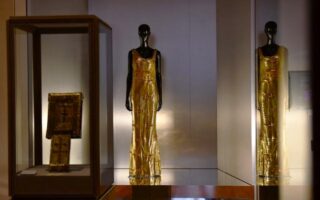11 Paintings You Can’t Miss in Paris
Paris is a mecca for art lovers. The city is home to some of the most celebrated and iconic works in the world, from the famed smile of the Mona Lisa to the bold brushstrokes of Van Gogh. But how to choose among the treasure trove of museums and galleries? If you only have a limited time in the French capital, here are the top 11 pieces of art you simply can’t leave without seeing.
1. The Mona Lisa – Louvre Museum
No trip to Paris is complete without a visit to the Louvre and a chance to gaze upon the mysterious half-smile of Leonardo da Vinci’s Mona Lisa. This small, unassuming painting has captivated the world for centuries, drawing millions of visitors each year who are transfixed by her expression. If you don’t mind the queue, marvel at the incredible detail and technique that has made this Renaissance masterpiece an enduring icon of art history.
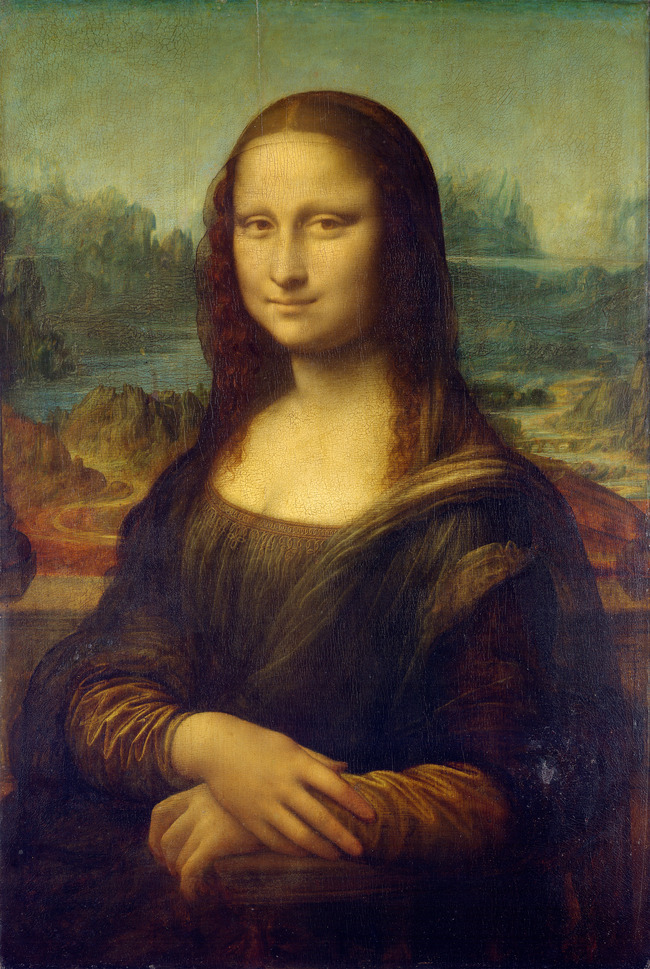
Mona Lisa by Leonardo da Vinci.
2. Starry Night Over the Rhône – Musée d’Orsay
Housed in the stunning former railway station of the Musée d’Orsay, Van Gogh’s Starry Night Over the Rhône is a swirling, hypnotic representation of the night sky that continues to mesmerize all who behold it. The artist’s bold, energetic brushstrokes and use of vibrant blues and yellows create a sense of movement and dynamism that seems to leap off the canvas and draw you into its depths.
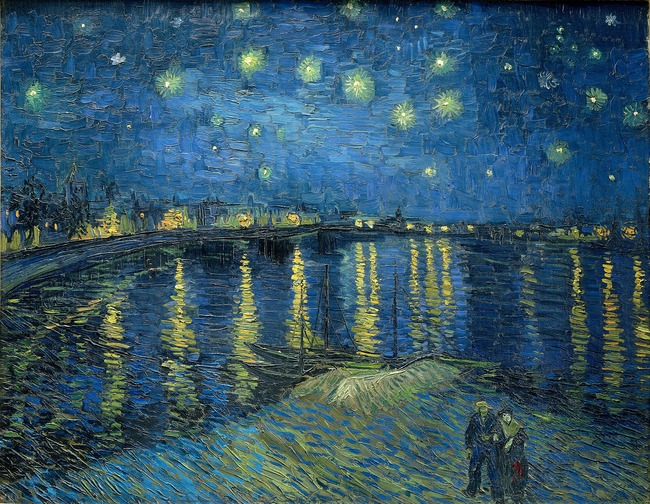
Starry Night Over the Rhône by Vincent van Gogh
3. Liberty Leading the People – Louvre Museum
One of the most famous French paintings, Eugène Delacroix’s Liberty Leading the People is a powerful, heroic depiction of the July Revolution of 1830. A symbol of the nation’s revolutionary spirit, the painting shows a woman representing the figure of Liberty, leading a crowd of citizens over the bodies of the fallen. The work’s dramatic composition and Delacroix’s masterful use of light and color make it a truly awe-inspiring sight.

Liberty Leading the People by Eugène Delacroix
4. The Coronation of Napoleon – Louvre Museum
Napoleon’s coronation as Emperor of France in 1804 was a pivotal moment in European history, and Jacques-Louis David’s monumental painting captures the grandeur of the occasion in spectacular fashion. Measuring over 30 feet wide, this enormous canvas immerses the viewer in the sumptuous pageantry of the event, with Napoleon and Josephine at the center of a richly decorated, ceremonial tableau. It’s a stunning example of Neoclassical painting at its most impressive.
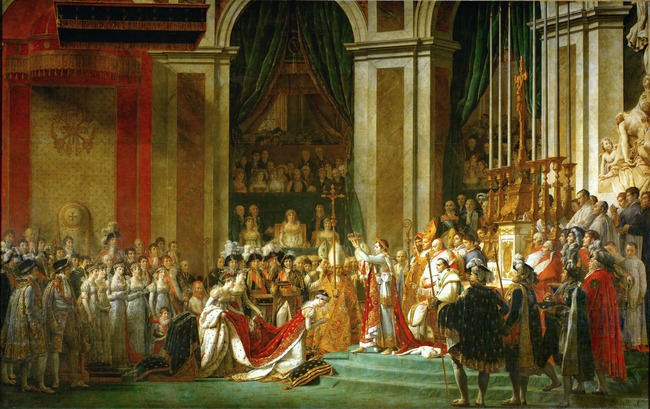
The Coronation of Napoleon by Jacques-Louis David
5. Olympia – Musée d’Orsay
Édouard Manet’s Olympia caused a scandal when it was first exhibited in 1865 for its frank, unapologetic depiction of a nude female subject. The model’s direct gaze and the painting’s bold, modern style challenged the traditional norms of French academic art. Today, Olympia is recognized as a groundbreaking work that paved the way for the radical new visual language of modern art.

Olympia by Édouard Manet
6. The Luncheon on the Grass – Musée d’Orsay
Another controversial masterpiece from Édouard Manet, The Luncheon on the Grass features a nude woman casually picnicking with two fully clothed men. The juxtaposition of the nude figure with the dressed men, as well as the painting’s loose, gestural brushwork, was deeply shocking to 19th-century audiences. Yet the work’s audacious composition and modern sensibility make it a landmark of French Impressionism that simply can’t be missed.

The Luncheon on the Grass by Édouard Manet
7. Water Lilies – Musée de l’Orangerie
Claude Monet’s tranquil Water Lilies paintings are some of the most serene and immersive works of art you’ll ever experience. Installed in the Musée de l’Orangerie’s circular gallery, these vast, panoramic canvases surround the viewer, enveloping them in Monet’s mesmerizing vision of his lily-covered pond at Giverny. Lose yourself in the shimmering, meditative brushwork and sense of peaceful contemplation.
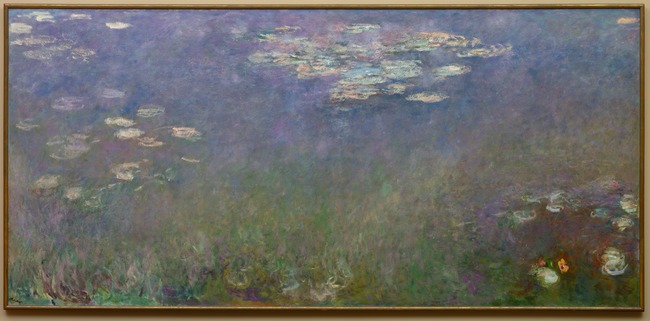
Water Lilies by Claude Monet
8. The Raft of the Medusa – Louvre Museum
Théodore Géricault’s The Raft of the Medusa is a colossal, dramatic painting that depicts the aftermath of a French naval shipwreck. The massive canvas (over 16 feet tall) immerses the viewer in a scene of desperation and human suffering, as the survivors cling to a makeshift raft, awaiting rescue. Géricault’s masterful use of chiaroscuro and expressive, Romantic style create a work of towering emotional power.

The Raft of the Medusa by Théodore Géricault
9. The Oath of the Horatii – Louvre Museum
Jacques-Louis David’s The Oath of the Horatii is a quintessential example of Neoclassical painting, with its heroic subject matter, carefully balanced composition, and crisp, defined forms. The painting depicts a scene from ancient Roman history, as three brothers prepare to go to war, their father dramatically gesturing them to swear an oath of loyalty. The work’s stern, monumental tone reflects the Neoclassical emphasis on duty, honor, and self-sacrifice.
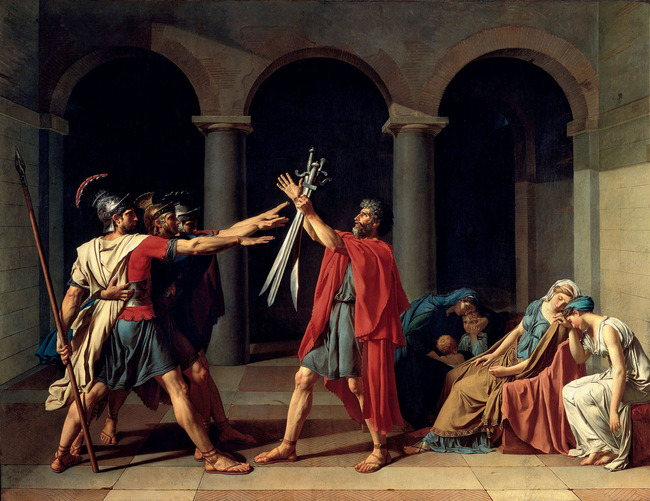
The Oath of the Horatii by Jacques-Louis David
10. The Burial at Ornans – Musée d’Orsay
Gustave Courbet’s monumental The Burial at Ornans is a landmark of Realist painting, depicting a solemn funeral procession in the artist’s hometown in meticulous detail. The sprawling canvas (over 20 feet wide) is a departure from the idealized, heroic history paintings that had dominated French art, instead presenting an unvarnished, unsentimental view of everyday rural life. Courbet’s uncompromising style and choice of subject matter made this work a shocking and controversial statement in 19th-century Paris.
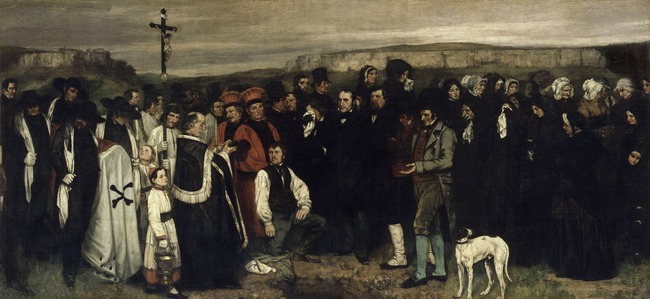
The Burial at Ornans by Gustave Courbet
11. Portrait of the Artist – Musée d’Orsay
Vincent van Gogh’s self-portrait at the Musée d’Orsay is a powerful exploration of the artist’s inner world. Painted in 1887, the work is characterized by its color palette, with dramatic contrasts of absinth green, turquoise, and fiery orange. Van Gogh’s piercing gaze and distinctive brushwork reveal a profound psychological depth, capturing the artist’s complex emotional landscape.
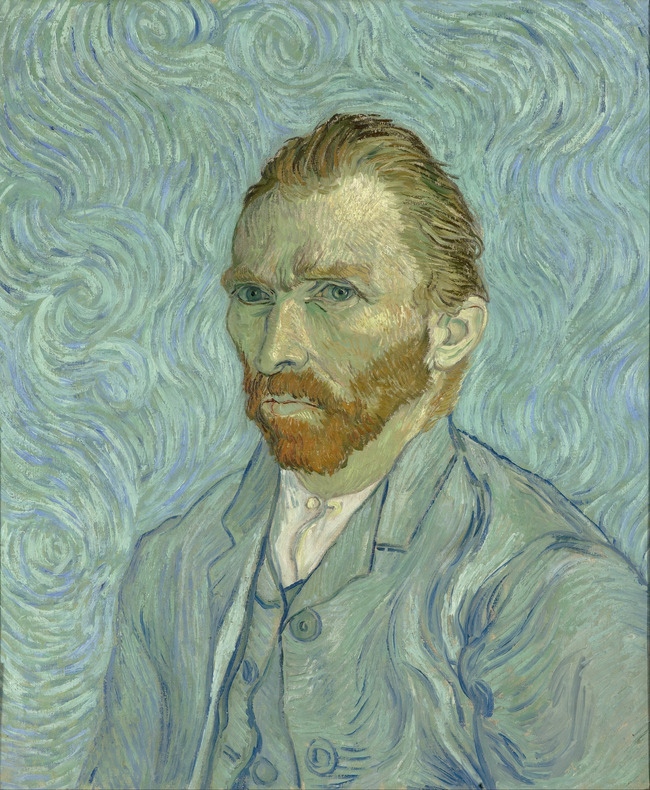
Self portrait by Vincent van Gogh
Lead photo credit : Van Gogh art in Paris. Photo: Shutterstock
More in Art, Must-see Paris, paintings
